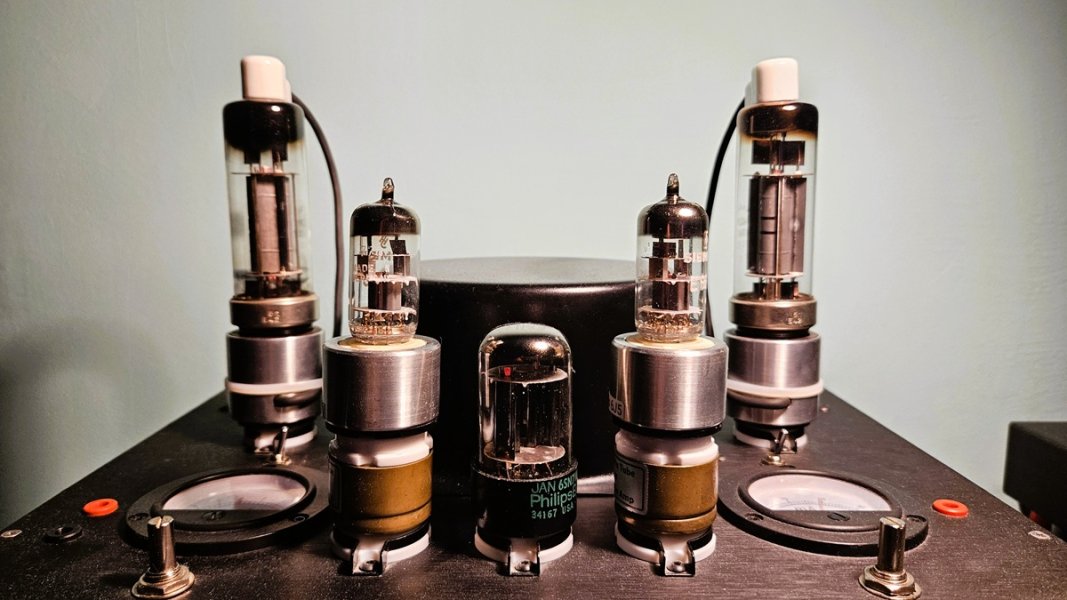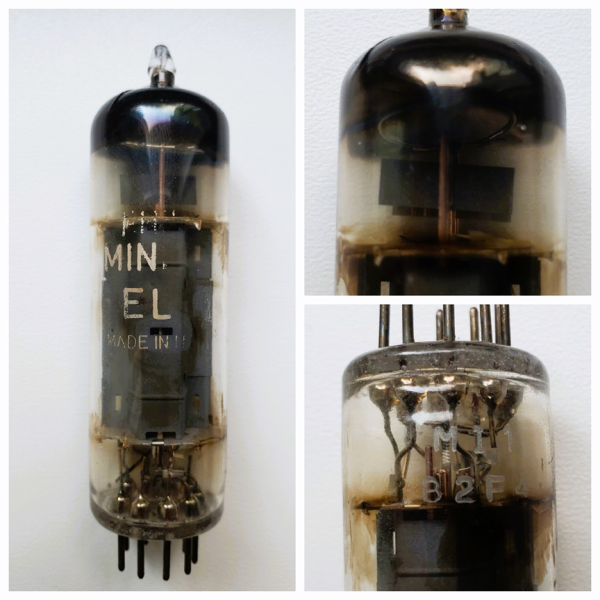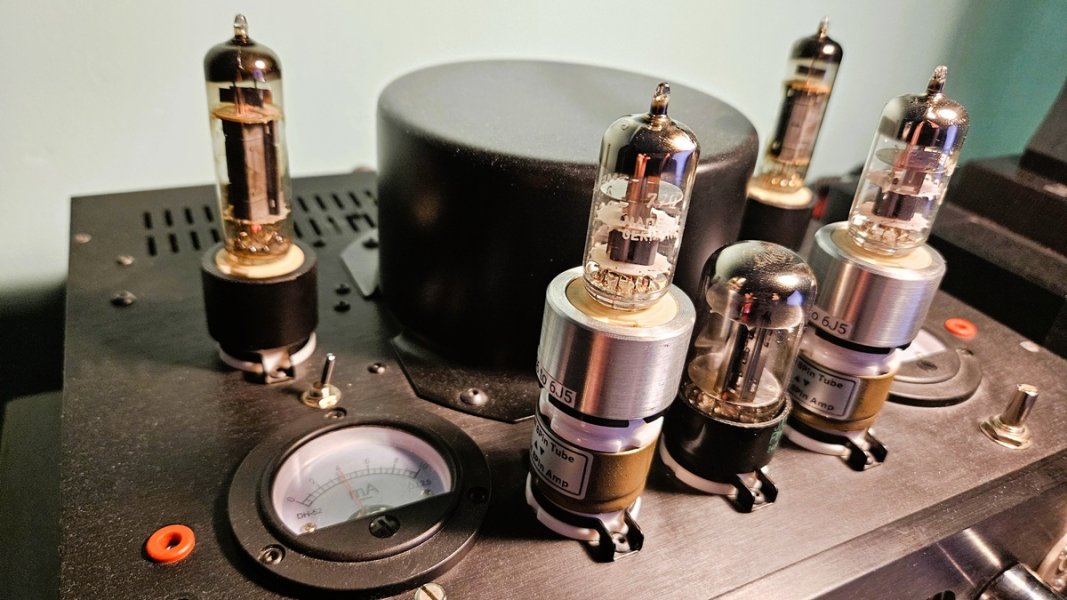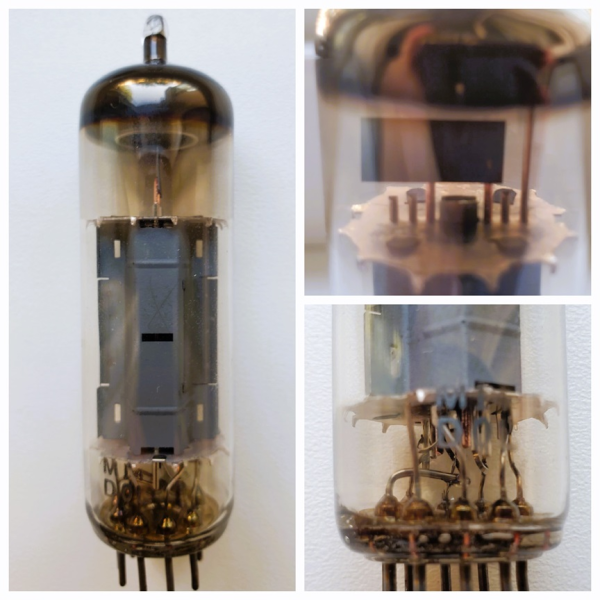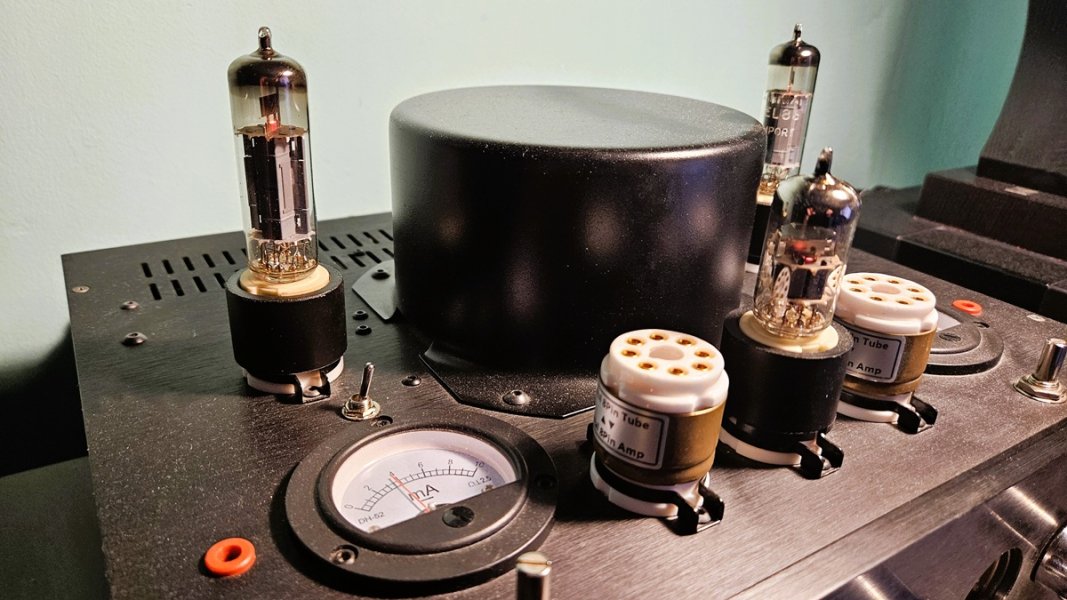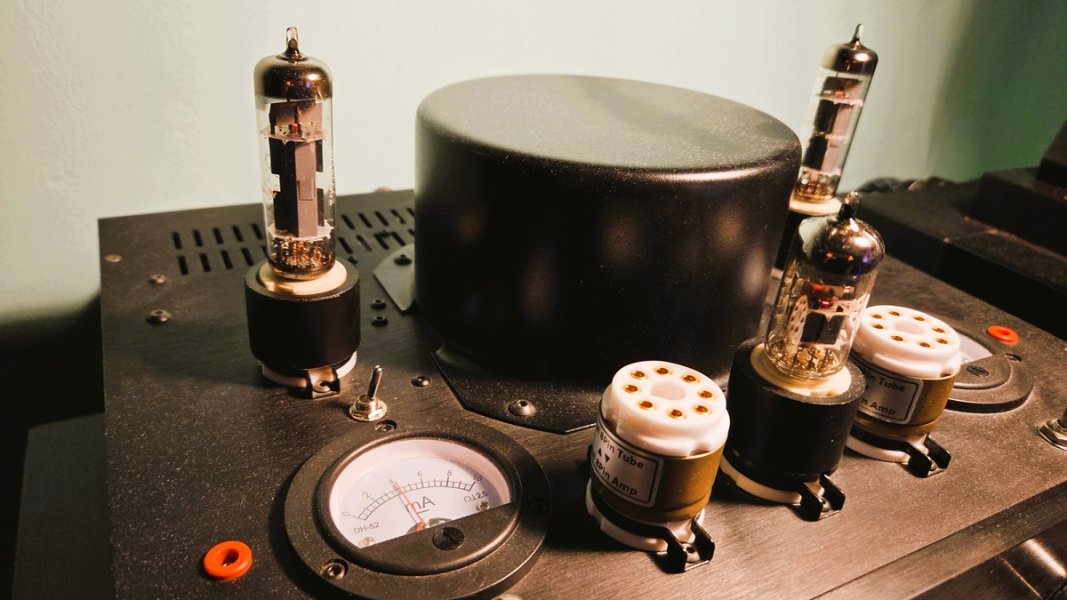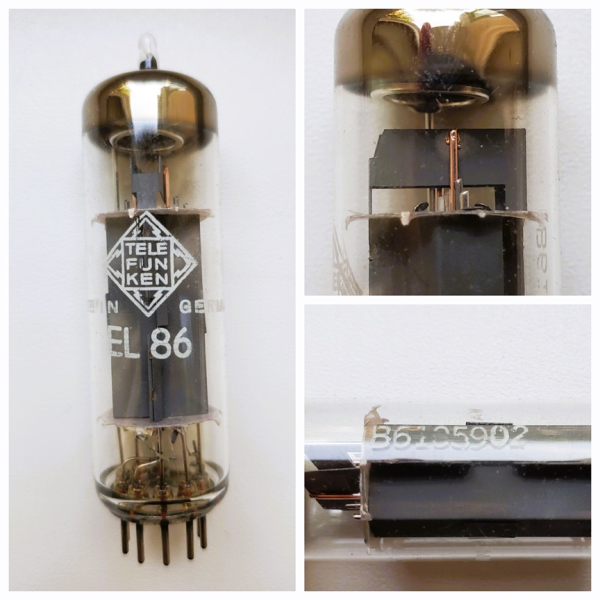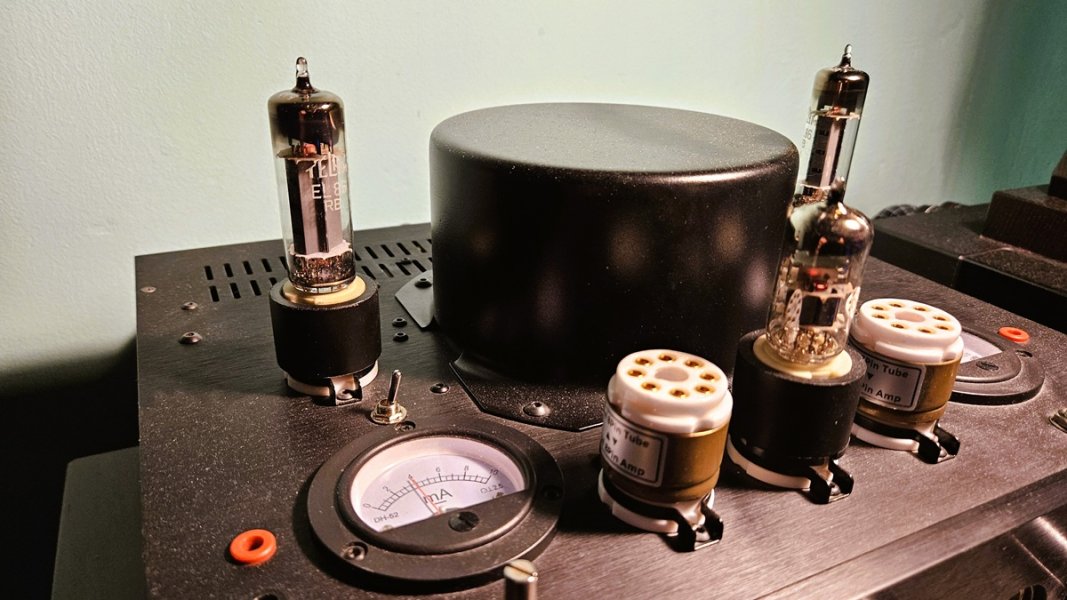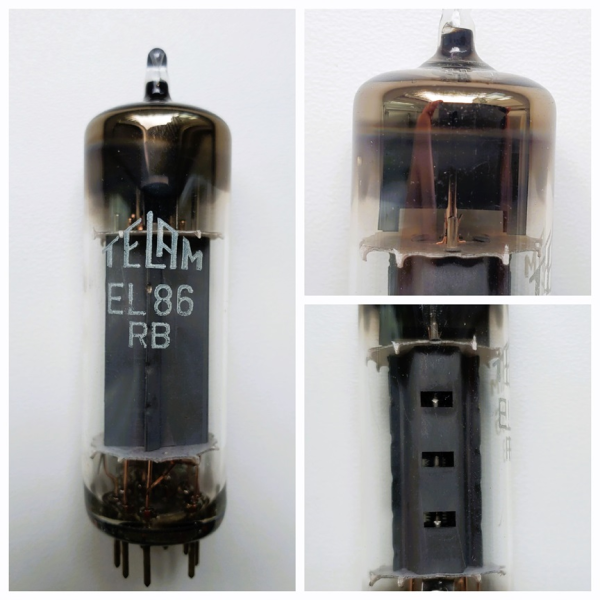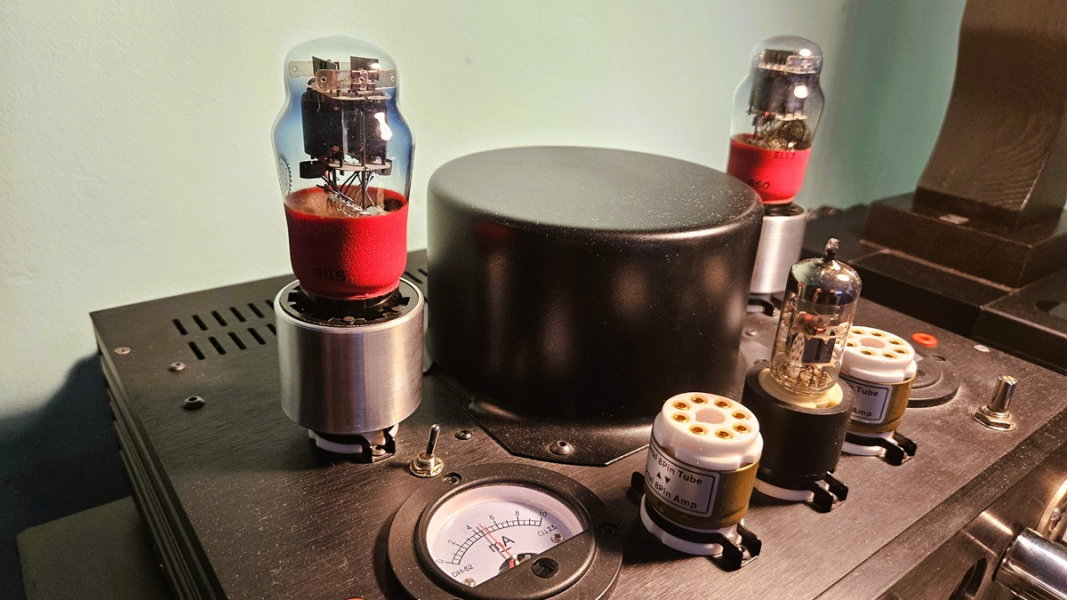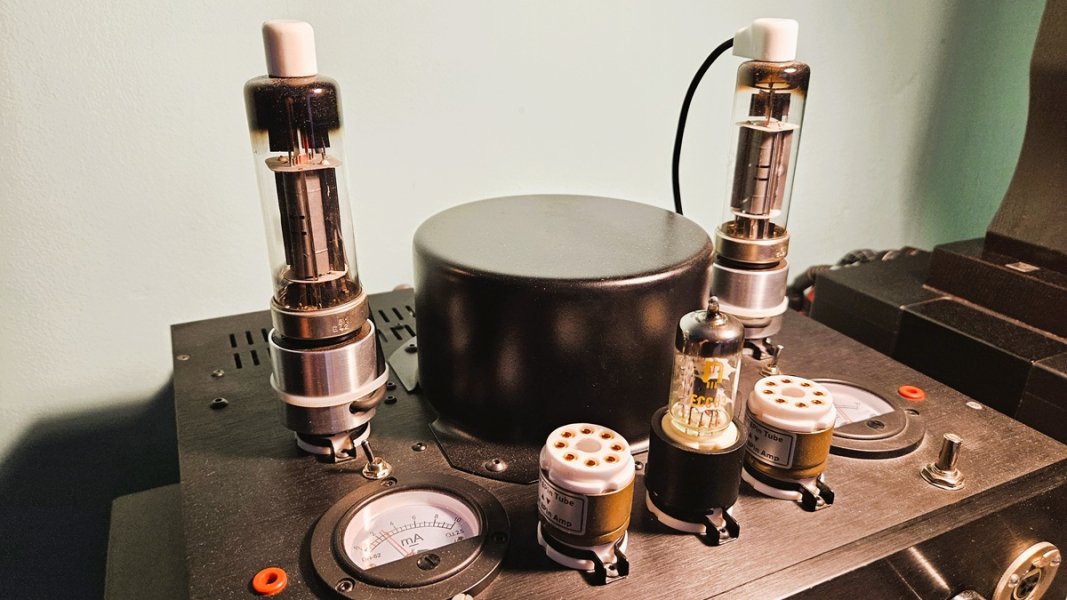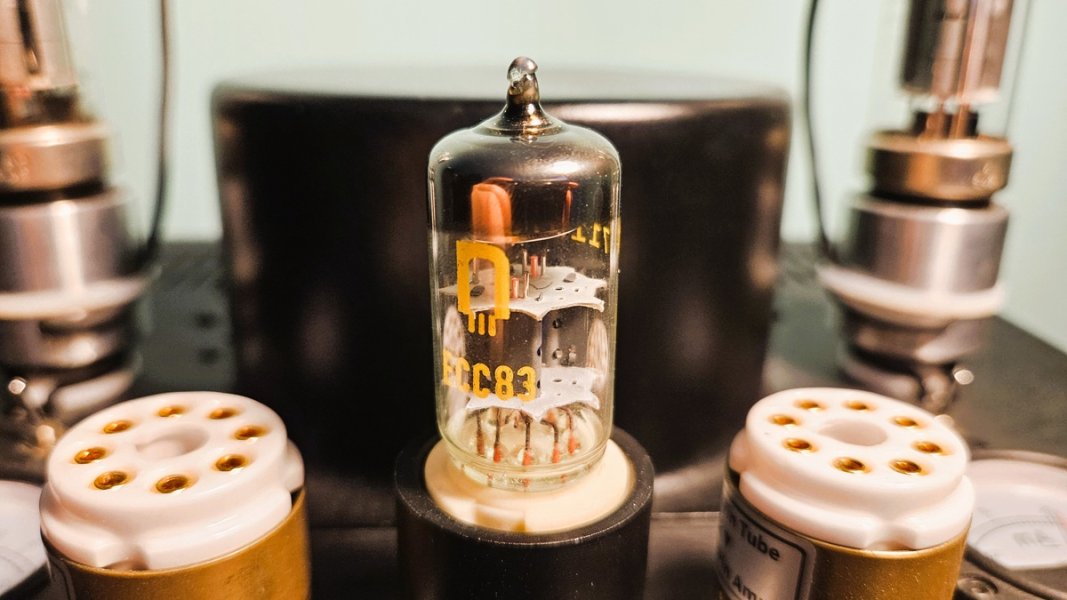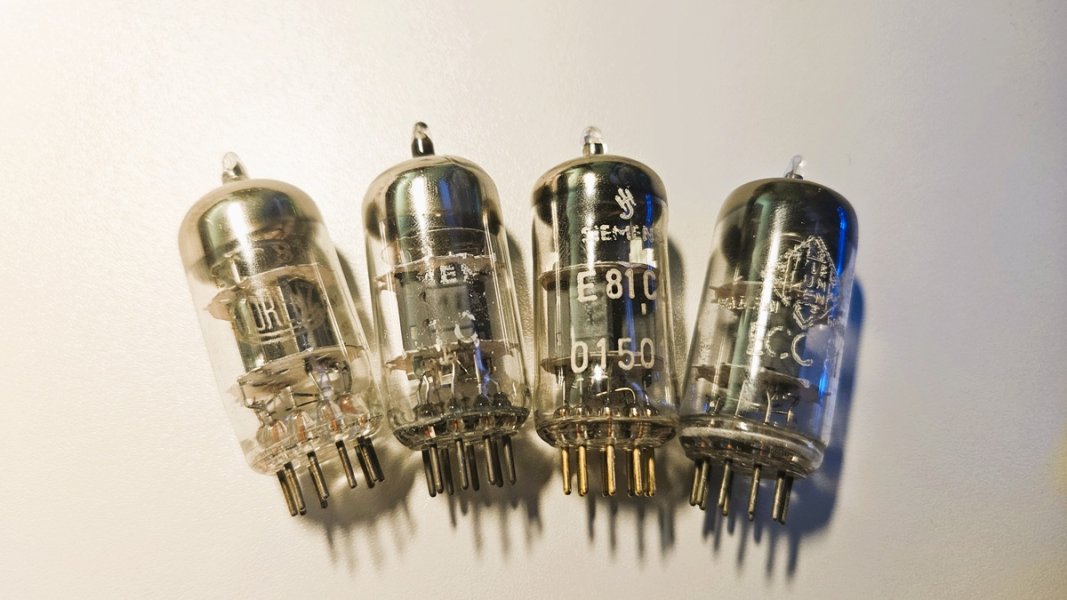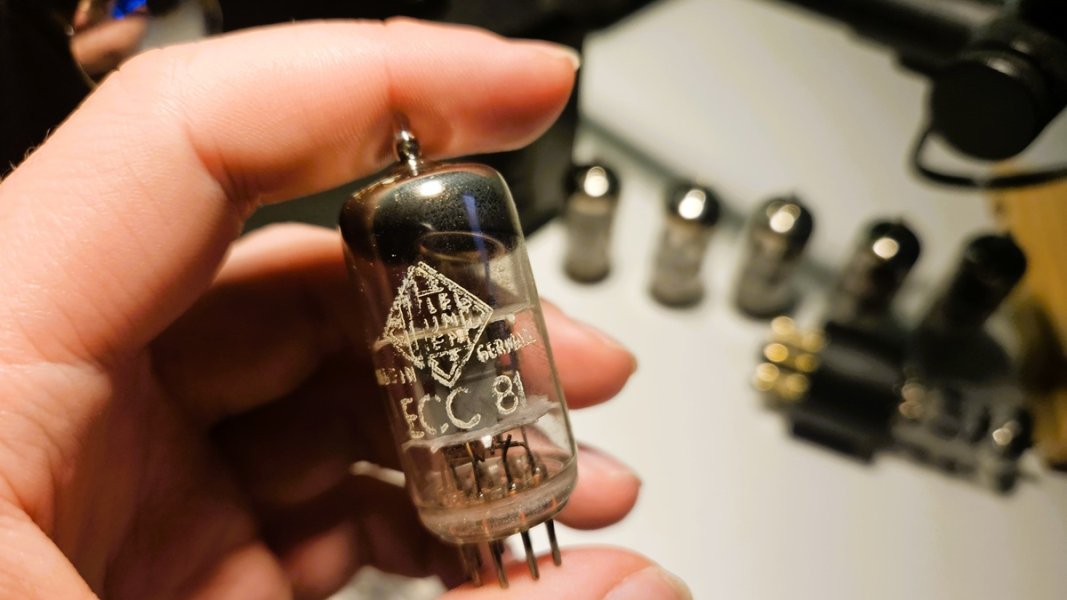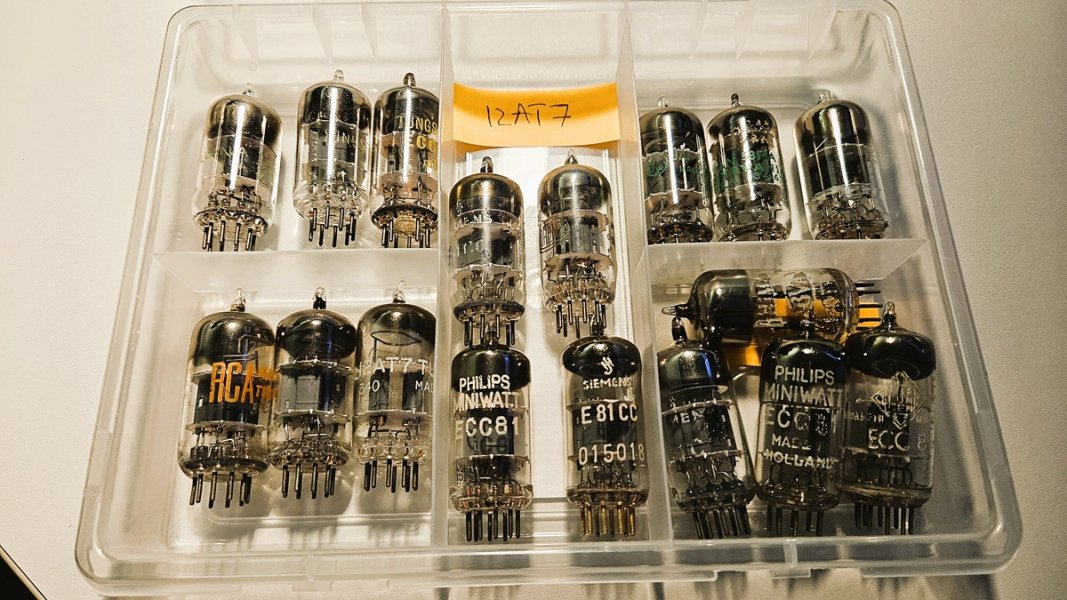Its fun to see the various tubes you've dug up; many of them are not available in the US.
Yes, I focus on european produced tubes because these sound better to my ear. In general I am interested in old Philips production and german manufacturers (Siemens, Telefunken, Lorenz).
12AT7s have a different operating point from E88CCs. If the circuit is not optimized for the specific tube you will not hear what the tube really does! Does your amplifier allow for variable plate Voltage, variable plate load and variable cathode resistor values? To optimize for each tube you would need to change these parameters.
No, my amplifier uses fixed grid bias. The operating point is fixed, for input stage is 180V/4mA and for output stage is 200V/20mA (Va/Ik). In order to use a tube I determine on a small tube tester or via the triode graphs (output stage is triode strapped) the control grid voltage and then set that one on my amplifier via a voltmeter (I have test points for each stage, one value settable for both channels). I know about different parameters of the tubes and how those affect sound quality. In my view an optimal operating point for a tube has to be close to the "typical operation" they describe in the datasheet. Therefore E88CC has to work optimally around 90V/15mA. I am far from that point. The 12AT7 has to be around 250V/10mA and I think I am closer to that with my amplifier, however the E88CC is levels above it in sound quality. Now do not understand me wrong, I like 12AT7 (especially the british GEC A2900 which is not exactly a 12AT7 in my view) but if I try to compare them, I always find the frame grids superior. There are of course many other parameters but I have no control over those.
While I agree with your electrical remarks, I think the truth is in the middle. Indeed, a tube can sound different in different circuits and topologies but there are also qualities which are specific to the tube itself and those are ported to every design. I played for fun with these tubes over the years and until now I tried some of the tubes I still own on 3 different tube amplifiers and some of the thing I like or disliked remained there. It is true, everytime the "amplifier signature" was present. Some were OTL, my actual one is SET, some were cheaper models lacking clarity and being bloated and warm, others were better and went more towards a bigger soundstage and neutral sound (my actual one is like this) but the tubes remained as I knew them with only a small amount of exceptions. I expect different operating points for a tube in each of them and different designs and still, what I knew about a tube was there. Besides my personal experience, I discussed over the years with several people and followed a lot of threads where people like me experimented and I found common ground with their experiences. Everyone used different amplifiers with different topologies.
So, in short, you are right from an electrical point of view, I only consider that my findings are relevant, regardless of the amplifier and tube optimization.
Also 12AX7s and 6SL7s have a much higher output impedance than a 12AU7 so the kind of load they drive can have a profound effect on bandwidth. How do you deal with this issue?
I used 12AX7 and 6SL7 here but only set the control grid voltage.
I know a gyrator plate load can be varied but the actual output transformer load still affects what you hear. Do you have taps on the primary side of the transformer to optimize it for each tube?
No. I will post a description from the builder of my amplifier (it is a custom model made in Sweden). Eternity, Infinity, Citadel and Oblivon were his models he was building and his remarks are somehow related to those, but I guess there is enough information in between. Citadel was fully balanced, Obivion had output stage balanced and input stage SE (I think he used 6AT6 and 6AV6 in input) and Infinity/Eternity (same design, Infinity is more powerful to drive more demanding speakers) is completely SE. There are, for sure many other similarities between them, not only differences.
Eternity is basically a low power version of Infinity. A SET, single ended triode, amp with open loop (no gNFB) and parafeed output. The input stage, using the 6AV6 tube, is grid (fixed) biased. Followed by CCS loaded source followers that drive the output tube grids. The grid drivers relieve the input tube of any drive duty. Tubes do only voltage amplification.
Tubes do what they do best and FETs do what they do best, supply current. The output stage is also SE and grid biased, using the 6S19P tube. All tube anodes are gyrator loaded. Both B+ and B- supplies are regulated. Eternity, just like Infinity, will have more of the old tube sound than Oblivion and Citadel has. This is because it’s single ended.
The balanced amps cancels a lot of distortion and are also constant current draw amps, while Eternity is not. It’s a matter of taste what sound signature you prefer. Eternity can drive efficient speakers as well as headphones. Power output is 3W into 8 ohms, 1W into 8ohms, 430mW into 20 ohms, 170mW into 50 ohms, 90mW into 100 ohms, 45mW into 200 ohms, 30mW into 300 ohms.
And another remarks from him about his amplifiers:
These are not old school style tube amps where the tubes are resistor loaded and have a load line which goes into the non-linear region of the tubes. The tubes are always working in their linear region thanks to the gyrator plate loads. Other design choises makes these amps have fast transient response and transparency. But, all amplification is done by the tubes! That's what tubes do best, amplify voltage. MOSFETs supply current together with the output tubes. That way all components do what they do best! There's no SS sound at all from any of these amps.
My amps don't have "driver tubes", they have "input tubes". The input tube don't drive anything. I have source followers (grid drivers) that drives the output tube grid. So the input tubes function is only for voltage amplification. The output tubes however are working together with it's plate load (gyrator) to supply current to the load. Oblivion has some more tube flavor than Citadel and the upcoming Infinity will have even more. The output stages in Oblivion and Citadel are LTP stages with a CCS tail.
In classic designs the input signal goes to the grid of the driver, then the anode goes to the grid of the output tube and so on. It's the same in Eternity also. The difference is that we have source followers in between that drives the output tube grid. You can read about the grid drivers on the "amps" page on my website.
All tube rolling will have effect on the sound sig. In a classic amp the input tube "drives" the output tube. So one has to account for things like rp and other characteristics of the tube. Those things are only important in the output tubes in my amps. But, the input tube will still affect the sound!
Unfortunately he cannot tell us more about it, he died a few years ago. He made this kind of "modern" approach on tube amps with gyrator loaded plates and source followers and everything you can read there based on some designs from Mr. Curwen from Finland, which as far as I heard was famous on DIY forums. I do hope his remarks will help you understand more than I can explain about it and the reason I find it sounds good with almost any tube you throw at it (or at least superior to other amplifiers I have tried, not many, after I received this amplifier I stopped searching for something else and start thinking of a more evolved version of it with variable plate voltages).
Also I'm curious how you deal with the fact that tubes of the same brand and run will have slightly different characteristics that will cause them to sound different from each other.
I do not understand exactly what you mean here. I use in input stage a double triode or a pair of single triodes. In output stage a pair of tubes adapted to 6V6/EL34 via some adapters (or natively if pinout allows). Because of the design of the amplifier, I have to keep currents in both stages in some ranges. For output stage I have to keep currents in range of 15-24mA and for input stage 3-5mA. I guess this limitation comes from those source followers used between the stages. So I measure and use decently matched pairs of tubes (10-20%) so if I apply the same negative control grid voltage, both tubes will stick to the range (one being stronger and the other weaker in terms of Ik but still inside the range.
I an convinced I have not answered the question, please help me understand it and I will try.
I am not an amp builder or designer, I am a tube roller. This is what I do, I am interested in tubes and amps are only a tool to obtain what I want. But even in this case, I am strongly convinced the things I learned about some of the tubes I have tried will be valid in any circuit.
In fact, exactly this is what I am looking for at the moment, a tube amp builder to build me the ultimate tube rolling amplifier, with variable plate voltage, where I can use tubes at different operating points and I can research on this area. For example to be able to put E88CC at 90V/15mA and also to try it at 180V/5mA and then to see what differences in frequency range I am able to hear. I also would stick to fixed grid bias because in my view it helps in dynamics, control and overall focus. My previously 2 amps were cathode biased and the difference in this area is not marginal. Of course, everything I know was experimental finding, people knowing more than me will for sure see it differently.








